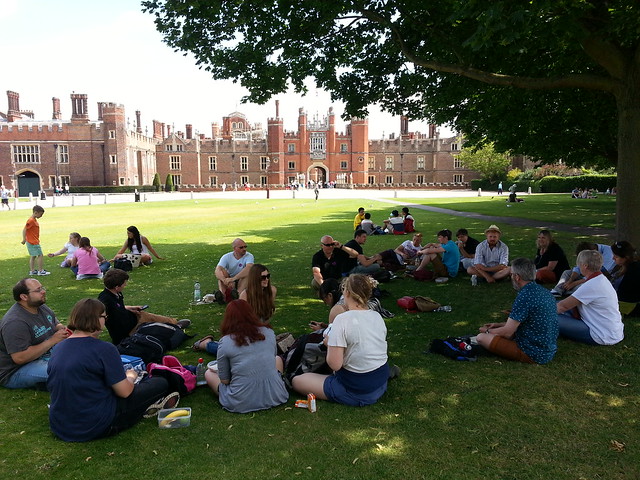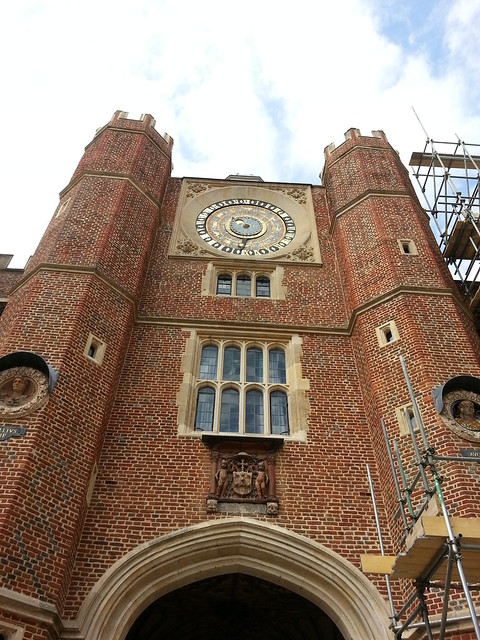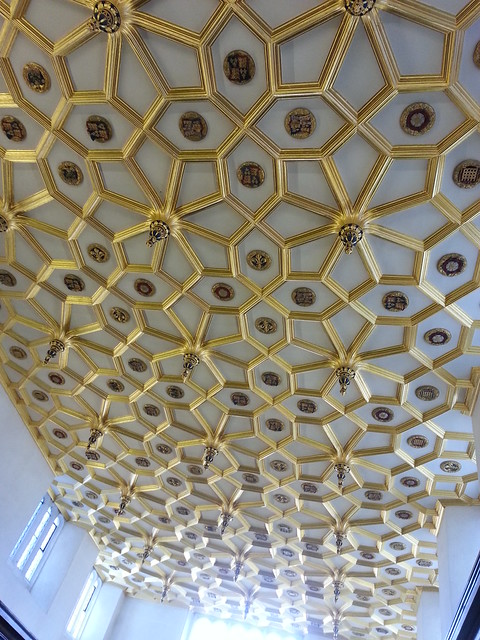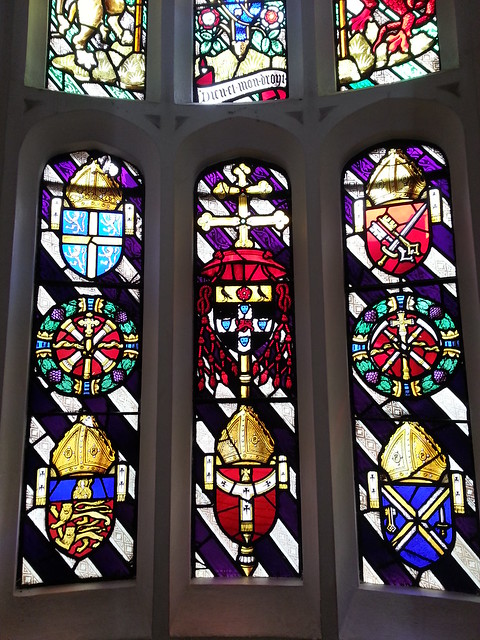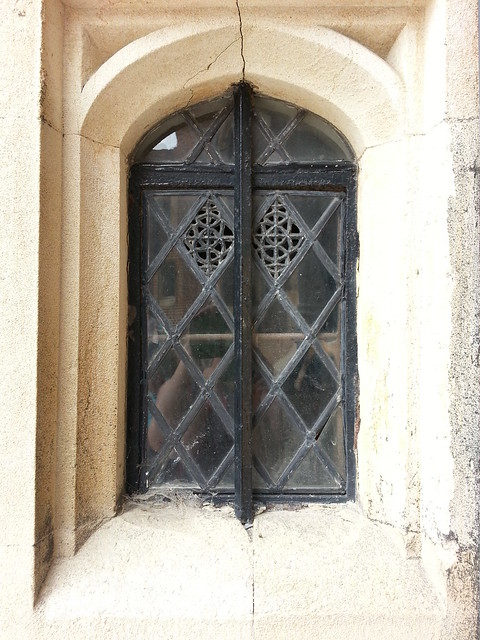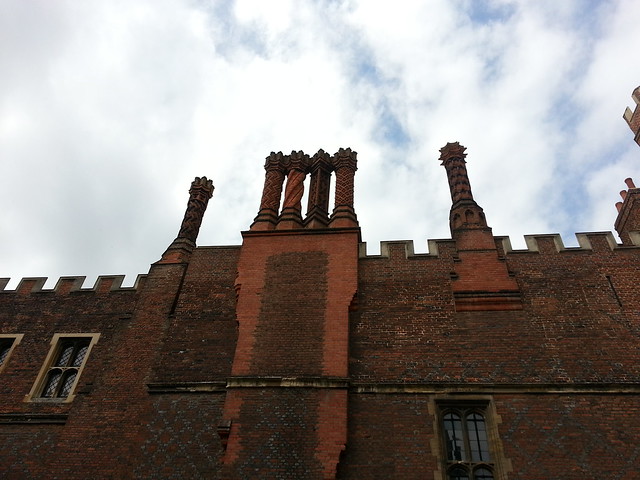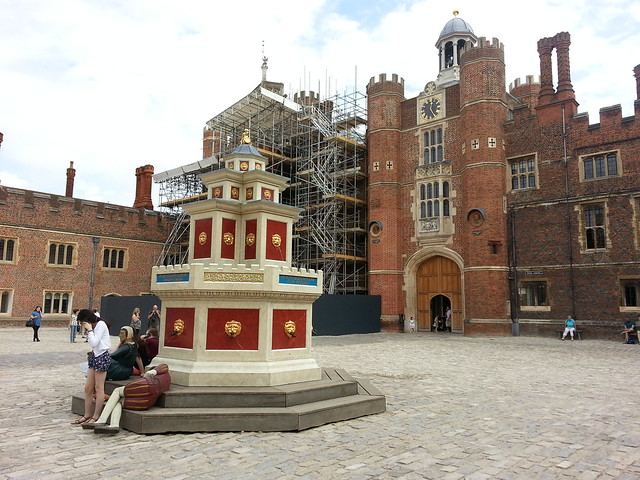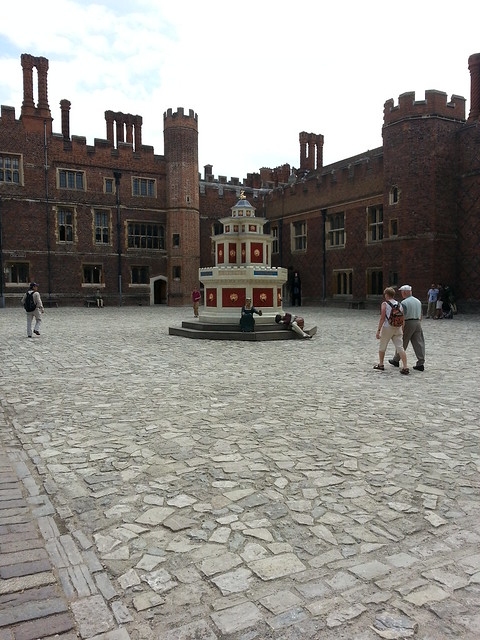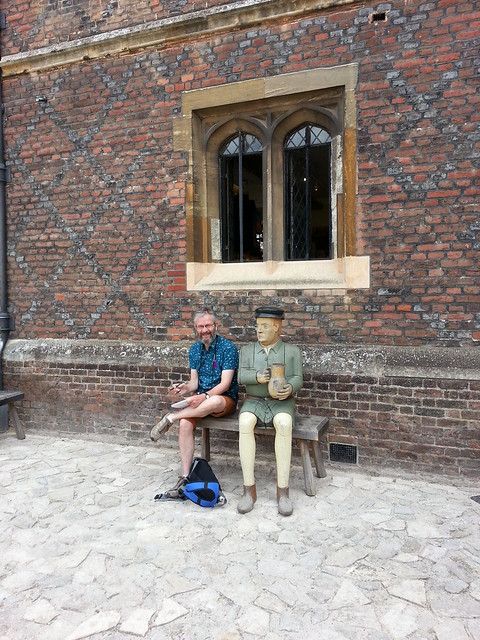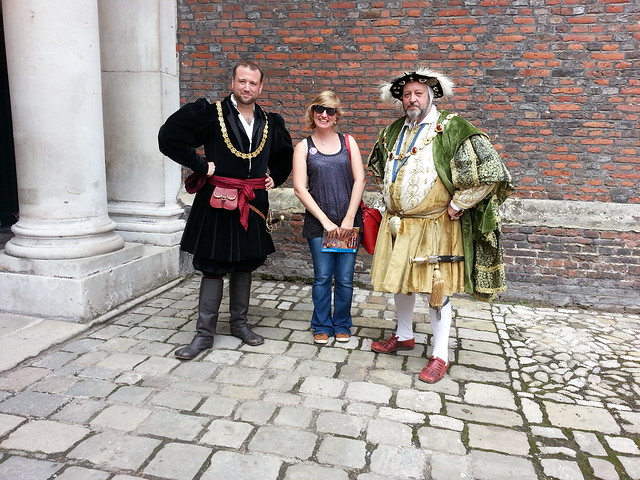Day 5 – Visiting Hampton Court Palace
On Friday, we took a well-earned break and visited Hampton Court Palace.
We were very interested in seeing the location that had played such a big part in the life of William Paulet, who was responsible for the building of Basing House in the 1530s.
Hampton Court is massive! We were immediately taken aback by the scale of the gatehouse entrance into the Base Court. This is the same sort of architecture that would have been seen at Basing House, and is recreated in Mike Codd’s excellent painting on display in the Basing House museum.
Hampton Court Palace gatehouse:
Basing House gatehouse reconstruction:
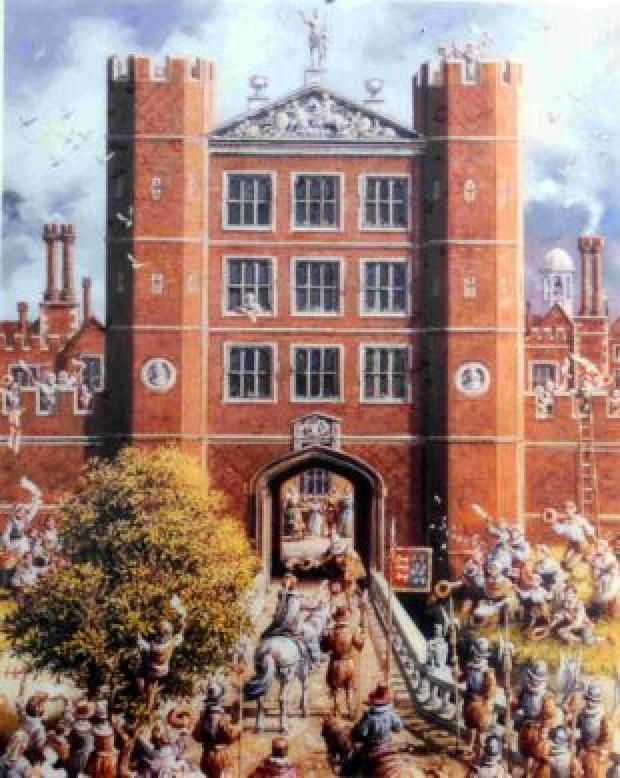
Mike Codd’s painting of the Basing House gatehouse. From the Basingstoke Gazette website.
Jude, our resident expert in all things post-medieval, took us on a tour of the Palace site. There was so much to look at that we only really saw a very small part of the entire complex. We concentrated our efforts on the Tudor part of the Palace, but also found time to visit the superbly decorated Chapel Royal (which is mostly now from the design of the much later Sir Christopher Wren and Grinling Gibbons).
The Henry VIII tapestries were breathtaking. There is so much detail in them. We spent a long time reflecting on what a talking piece they would have been when waiting audience with a representative of the King (or indeed, the King himself).
My absolute favourite detail of the entire site has to be the decorative chimney stacks. There is a nice write up on them on the Historic Palaces website: http://www.hrp.org.uk/aboutus/whatwedo/AboutUsWhatwedoBuildingConservationProfileDecorativeChimneys
Apparently there are over 200 chimneys, although I only spotted a few of these.
I also enjoyed the Tudor brickwork, particularly clear in the inner Base Courtyard. The diaper black patterning against the red bricks is gorgeous, especially at the parts where the lime mortar is still quite bright white. All in all, the result is a combination of surprisingly bright colours.

This photo of one of the fantastic sculptures in the Base Courtyard, also shows the black diaper patterning in the brickwork. Something we also see at Basing House.
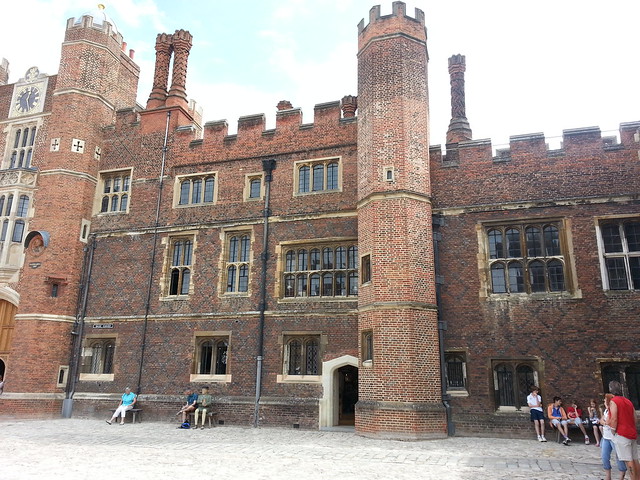
More of the diaper patterning. You can also see one of the terracotta roundels to the left of this photos.
It was also very interesting to see the central fountain in the Base Courtyard. It looked from the base to be a similar size to the one in the Old House at Basing House. At Basing House, only the footings of the well remain, so it was useful to see how it may have looked. Although I do not know what period this particular feature at Hampton Court Palace comes from, the area of the Palace that we were in, was 16th century.
Our Artist-in-Residence got plenty of sketching done. I can’t wait to see the results!
Whilst on site, we kept an eye out for the Da Maiano terracotta roundels (most of which are very high up and so quite difficult to get a good view of). The roundels at Hampton Court Palace date from the 1520s, and were originally painted with bright colours.
At Basing House, in the Visitor Centre and in the Museum, there are some examples of the roundels found at Basing House. But these roundels, although stylistically similar, are made from stone rather than terracotta: That’s one point up for Basing House as stone roundels are far superior to teracotta moulded ones!
If you are interested in these roundels, there is another teracotta head, from the same workshop as the Hampton Court Palace roundels, at the National Trust’s The Vyne in Basingstoke. This is located very close to Basing House, and is where the Parliamentarians garrisoned when they were beseiging Basing House. The Vyne website: http://www.nationaltrust.org.uk/vyne/
A particular highlight of my day was meeting Henry VIII. As you can see here, I was a little starstruck!
We had a lovely lunch picnic outside the Palace and some of us even managed to find an ice-cream van!
I would definitely recommend Hampton Court Palace as a day out. There is much to see and the temporary exhibitions are high quality and engaging.
Filed under: Day Five, Student Trips, Summer Excavation Tagged: archaeology, hampton-court-palace, henry VIII, paulet, royalty, Southampton, tudor, unisouthampton, william

